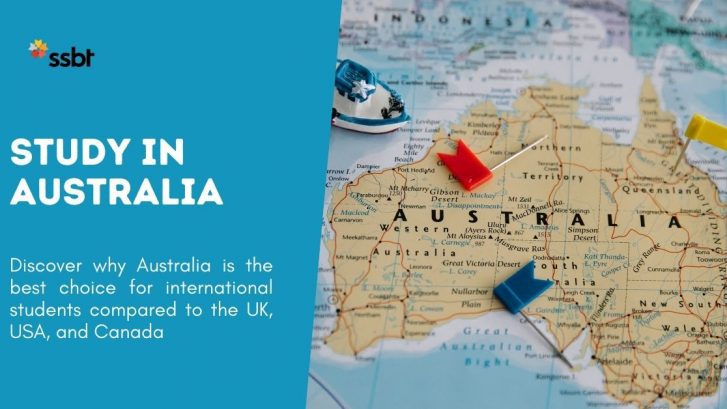Become an Education Agent for SSBT Australia
If you’re an education consultant or a student visa agency in Bangladesh, India, Pakistan, Nepal, or Asia, you’re already aware of the strong demand for studying in Australia. Students are actively seeking reliable pathways to Australian colleges — and that’s where you can make a difference.
Become an Education Agent for Australian Universities
At the Sydney School of Business & Technology (SSBT), we invite dynamic and ethical education partners to join our growing network of international agents. Together, we can help students achieve their dream of an Australian qualification while building your agency’s success.
To become an Agent, Apply Now
To learn more about becoming an Agent, read more.
If you encounter any issues, please email our Marketing & Admissions Manager at support@ssbt.edu.au.
Why Partner with SSBT?

SSBT is one of Australia’s most established vocational education and training (VET) providers. With over a decade of experience, we welcome students from across the world into our Sydney campuses — offering high-quality courses, career support, and a multicultural learning environment.
Source IDP about SSBT
When you partner with SSBT, you gain access to:
✅ A respected Australian college with CRICOS registration
🌏 Official recognition as an international education agent
💼 Dedicated support from our admissions and marketing team
📚 Regular agent training and compliance guidance
💰 Attractive commission structure for successful enrollments
Our partners play a vital role in connecting international students with education opportunities that change lives.
Step-by-Step: How to Become an SSBT Education Agent
Step 1: Understand the Role
An education agent for SSBT represents our institution in their home country — guiding students toward the right course, assisting with admission, and ensuring visa compliance. You are our bridge between students and Australia’s education system.
Step 2: Meet the Requirements
To qualify as an official SSBT agent, you should:
- Operate a registered education consultancy or student visa agency.
- Maintain a professional website, office, and contact channels.
- Have experience in student counseling or education services.
- Commit to ethical recruitment practices under the ESOS Act and National Code.
Step 3: Submit Your Application
Applying is simple and transparent:
1️⃣ Visit the SSBT website and go to the “Become an Agent” section.
2️⃣ Fill in the online agent application form.
3️⃣ Provide your business registration details and references.
4️⃣ Submit your company profile and any prior agency experience.
Once received, our admissions team will review your details and may schedule a quick meeting or verification call before final approval.
Step 4: Sign the Agreement
Successful applicants receive the SSBT Agent Agreement, which defines:
- Commission and payment terms
- Recruitment policies
- Marketing and brand usage
- Performance expectations
After signing, you’ll officially become part of the SSBT Global Agent Network.
Support You Can Expect as an SSBT Partner
At SSBT, we believe in long-term, transparent relationships with our agents. As part of our partnership, you’ll receive:
- Regular training sessions on courses, updates, and visa guidelines.
- Dedicated communication with our International Admissions team.
- Access to marketing materials — brochures, banners, and digital assets.
- Timely intake updates and recruitment resources.
We don’t just sign agents — we empower them to grow confidently in their market.
Benefits for Agents in Bangladesh, India & Nepal
Partnering with SSBT gives your consultancy the competitive edge you need in the study abroad industry:
🌟 Represent one of Sydney’s top VET institutions.
🌍 Promote affordable, high-quality Australian programs.
💼 Expand your service portfolio and boost client trust.
📈 Increase your student placement success rate.
🤝 Collaborate directly with our international team for continuous support.
Whether you’re based in Dhaka, Karachi, Chittagong, Kathmandu, or Delhi, SSBT offers the tools and partnership model you need to make a strong mark in the Australian education market.
Tips for Becoming a Successful Australian Education Agent
- Focus on genuine student recruitment — prioritize quality over quantity.
- Stay informed about Australian visa policies and course changes.
- Attend education expos, webinars, and virtual events hosted by SSBT.
- Use verified information and official college materials.
- Build relationships through trust, accuracy, and timely service.
These values make you stand out — and SSBT values agents who share our integrity and student-first approach.
Ready to Partner with SSBT?
If you’re an education agent in Bangladesh, India, or Nepal looking to represent a reputable Australian institution, Sydney School of Business & Technology welcomes you to apply.
Visit our website
Fill out the Become an Agent form
Start helping students achieve their Australian study dreams
Join SSBT — where your agency’s growth meets opportunity, integrity, and success.




